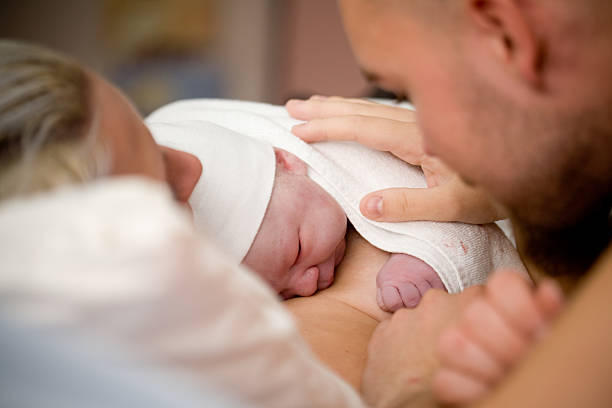Are you considering improving your physical health? However, you are unsure of where to start. Now you’ve come to the right place.
With an increased focus on health and well-being, exercise and physical fitness techniques are becoming more and more relevant. Perhaps you have a big event or an upcoming vacation you want to look your best for.
Whatever the reason may be and no matter what your fitness plan is for, this article covers everything you need to know about the best tips and programs to follow and why.
Keep reading to discover what to include in your personal fitness program. This will bring you closer to your health and fitness goals in no time!
Contents
Identify Your Goals
When identifying your goals for a fitness program, it’s essential to decide what you’d like to achieve. Searching for a “personal trainer near me” can help you develop a customized plan that aligns with your specific needs. Your program should include goals specific to strength and flexibility, like endurance training, nutrition, overall health etc. Working with a professional can provide expert guidance on proper form and progression techniques, while group fitness classes can offer additional motivation and accountability.
Consider both short-term and long-term objectives. Create measurable milestones to help you reach them. For instance, your short-term goal might be to increase your strength by completing a certain number of workouts each week. Similarly, your long-term goal could be a specific health accomplishment – such as running a marathon.
Look at Your Calendar
Looking at your calendar, you should find times you can incorporate physical activities into your day. For example, you can choose to walk or bike to work or school. Determine how much of this activity you can do on a daily, weekly, or monthly basis.
You should also think about activities you can do over the weekends or during lunch breaks. These activities can include exercising at a gym, playing a sport, or going for a swim.
Purchase Appropriate Equipment
You should also purchase the appropriate equipment such as athletic shoes, clothes, and accessories depending on the activity you choose. For weight training, you’ll need weights, a barbell, and an optional weight bench. For cardio, you can use jump ropes, medicine balls, Swiss balls, yoga mats, and fitness bands.
If you have access to a gym, you may have additional equipment available. When you’re considering what to use, think about your goals, space, and budget. Consult a coach or personal trainer to ensure you’re using the right gear and reducing any risk of injury.
Consider Your Fitness Level
When starting your personal fitness, it is important to consider your fitness level. If you are a beginner, it is important to start slow and increase intensity as you become more comfortable with the exercises. Start with low-intensity exercises such as jogging, walking, or riding a stationary bike.
When you are comfortable with these movements, you can add more advanced exercises such as interval training, strength training, and plyometrics. If you are already in good shape, you can adjust your program accordingly.
Identify Your Limitations
It is also essential to identify and consider any factors that could be a limitation to your physical health, fitness, and overall ability to exercise. These limitations could range from medical conditions that require special accommodations to physical impairments that you must work around.
Allergies, medical restrictions, and any health-related issues should be accounted for to create a fitness program that is safe and optimized for your well-being. Equally as important is accounting for any lifestyle factors that could limit the amount of time or energy you have available to devote to physical exercises. Such as time constraints, duties, travel, and other commitments.
Set Your Exercise Routines
Set a schedule of routines that you will do each day or week. This might include a combination of aerobic exercise (like running, dancing, or swimming), strength training, stretching, and core workouts. Proper exercise form, as well as the correct intensity, is also important.
Add Diversity to Your Workout
Your training program should include diversity in your workouts to make sure that all areas of your body are addressed. Variety can spice up your routine and help you achieve better results. Include exercises that target your core, legs, arms, and glutes, as well as activities that stretch your muscles, such as yoga or Pilates.
Add interval training workouts to your routine. This type of training helps to burn more calories and improve your overall fitness level. Cardio exercises should also be part of your program to keep your heart healthy and boost your energy levels.
You can consult a personal trainer to make sure you have the right program. Check this out and get personal training here.
Plan a Healthy Diet
Planning a healthy balanced diet is a key component of a fitness program. Eating a balanced diet will not only provide enough energy to achieve your goals but can also help improve overall physical health. Start by understanding the three main components of a balanced diet: carbohydrates, proteins, and fats.
Carbohydrates provide energy, proteins are necessary for cell repair, and fats are required for healthy functioning. Recognizing the nutritional requirements of each food group, as well as understanding your own dietary needs, will help you provide the optimal level of nutrition in the right proportions.
Get Enough Rest and Sleep
You should also focus on the importance of getting enough rest and sleep. Getting quality sleep is important for the overall health of adults, who should aim to get between 6 and 8 hours of sleep per night. This helps to support physical activity, boosting exercise performance and recovery, and improving energy levels.
Sleep also helps with regulating hormones, metabolism, blood pressure, and stress, all of which directly contribute to overall health and physical performance. Rest is also important for the body’s recovery, allowing muscles to relax and stay flexible.
Taking days off from exercise can help prevent burnout and reduce pain and fatigue. This should be incorporated into your program to ensure that the body gets enough rest to recover and stay healthy.
Drink Plenty of Water
Drinking plenty of water ensures that our bodies have enough hydration needed to perform physical activities. Water helps our bodies stay cool and lubricates the joints. It also helps flush toxins and waste and helps our cells and organs function properly.
Adequate hydration also aids in weight loss, because often thirst can be mistaken for hunger. Ensuring that your body is hydrated can give the most out of your physical workouts. It is recommended that adults should drink eight eight-ounce glasses of water each day.
Start Your Personal Fitness Program With These Tips
Creating a well-rounded personal fitness program that fits your lifestyle is essential for achieving physical health goals. Be sure to choose exercises you enjoy doing. Have goals that are achievable for a successful fitness journey.
Start small and stay consistent for lasting results!
Want to read more fitness articles? Browse the rest of our blog now.



